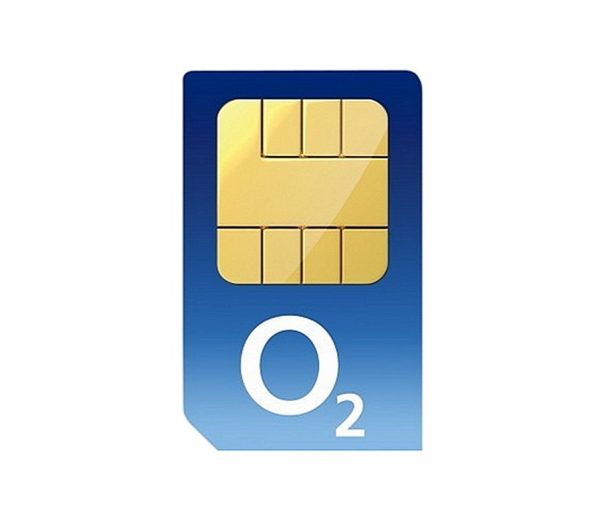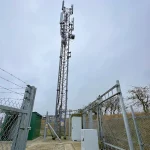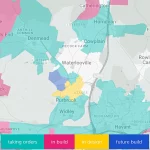O2 UK Issue Progress Update on Removal of Inbound 2G and 3G Roaming

Mobile network operator O2 (Virgin Media) has issued a progress update on their preparations for the imminent withdrawal of 2G and 3G inbound roaming services for business customers, which is due to occur in just two months’ time on 1st October 2025.
Just to recap. O2 and other mobile operators are currently in the process of switching off their legacy 2G and 3G mobile (mobile broadband) networks (here and here). O2’s move to withdraw 3G is due to reach completion by 31st December 2025, although it will take several years longer to completely retire 2G as it remains necessary for various devices (e.g. Energy Smart Meters / IoT) and as a fallback in areas of poor 4G / 5G signal. But O2 still expects to be in a position to “restrict” 2G services to existing IoT traffic and emergency calling (outside of 4G coverage only) by 1st October 2026.
The change will free up radio spectrum so that it can be used to further improve the network coverage and mobile broadband speeds of more modern 4G and 5G networks, as well as future 6G services. The switch-off will also reduce the operators’ costs and power consumption.
Advertisement
Last year O2 revealed that, as part of these changes, they would also be withdrawing inbound roaming services from their existing 2G and 3G networks on 1st October 2025 (here). The service is important because it allows users from other mobile operators to access O2’s local network and services, which is particularly tedious given how O2 were still seeing “significant inbound roaming traffic” as of early April 2025 (here).
Suffice to say that O2’s latest progress update notes how “the clock is ticking for organisations still relying on legacy connectivity to migrate“. While many have already begun their transition to 4G and 5G, there may be businesses that require more detailed planning and urgent action.
O2’s Progress Update on Inbound Roaming Withdrawal
We’ve been working closely with the Telecare Services Association (TSA), Ofcom, and the Department for Science, Innovation and Technology (DSIT) to ensure that the telecare industry is ready for the change. Over the past few months, we’ve taken a proactive approach, working directly with TSA to help their member organisations plan and prepare for 2G and 3G inbound roaming withdrawal, including:
➤ Regular sessions with regulators, government bodies, and TSA to provide context around the withdrawal and identify specific risks and mitigations.
➤ Participation in TSA-hosted industry events helping to brief the wider telecare community on the implications of the switch-off.
➤ Supporting telecare providers in identifying high-risk devices, enabling the industry to better understand the scale and nature of the challenge.
Getting your organisation ready
Through working closely with the telecare industry, we’ve discovered key challenges to migration and are sharing the insights on how to tackle them, in the hopes that other industries can use these findings to support their plans. Here are the ways your organisation can prepare:
➤ Understand which devices are at risk and the locations. Conduct a thorough assessment of all your connected devices to ensure that you’re aware of the locations that require your attention. This may need you to work with your service provider to collect information from devices on the different networks they can attach to or run tests to identify devices that can only attach to the Virgin Media O2 2G network.
➤ Budget appropriately for any replacements. Make sure you’re anticipating your organisation’s needs and be aware that the activity of replacing devices themselves can be a significant part of the costs of upgrading a device.
➤ Manage your team’s time to prioritise replacement visits. Ensure your engineers have the time and prep to carry out site visits for replacing devices.
➤ Consider if your devices can roam on another 2G network. This should be considered and checked during the process of identifying at risk devices.
All organisations that have devices operating on legacy 2G and 3G roaming networks should ensure they can answer these questions. Act now, assess your device estate, and ensure you’re future-ready.
While we’ve made significant progress, we’re still seeing inbound roaming traffic on our 2G and 3G networks. If your organisation hasn’t yet confirmed that all connected devices are 4G or 5G compatible, now is the time.
Roaming onto O2’s network can only be provided by other network operators. This means that in most cases we cannot identify or contact organisations that still rely on these services. Only the other network operators who provide the roaming services can directly identify or contact the organisations still relying on these services. That’s why we’re urging everyone, whether they’re a Virgin Media O2 customer or not, to speak to their provider and check their connectivity solutions today.
O2 has also published a fairly basic connectivity guide (VMO2-ROAMING.pdf) about all this, which is really just a bunch of links to additional information pages. The big risk is that, come the deadline, we could see a rise in people complaining about localised problems with securing basic mobile / voice coverage.
Mark is a professional technology writer, IT consultant and computer engineer from Dorset (England), he also founded ISPreview in 1999 and enjoys analysing the latest telecoms and broadband developments. Find me on X (Twitter), Mastodon, Facebook, BlueSky, Threads.net and Linkedin.






















































Whats happening about the upgrading of comms units in smart meters? the energy companies/smart meter providers seem to be very quiet abou this.
Bizarrely, I’ve noticed that some of 3’s UMTS cells, between Reading, and South London have came back online, recently, despite them claiming to have totally decommissioned the network (I wonder if that’s down to work being done, as part of the Vodafone merger?), and O2 seem to have intermittent, patchy remaining coverage, during my travels, whilst logging with an Android app (Tower Collector), for the OpenCellID project.
I get the feeling, that this will be a very long goodbye, given the glacial pace, so far.